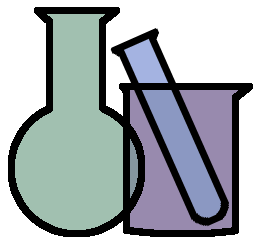Learning Outcomes for UNIT 2
Each student should have a good grasp of the following learning outcomes for unit 2. Unit 2 is assessed on Exam 2 which is on Tuesday 3/6/12 from 7-9 PM. Read the bulleted points and self assess yourself on how well you know the topic.
Students will be able to...
- Write a complete mass action expression and know the conditions in which it is equal to Q and K.
- Calculate the concentration of all species at equilibrium.
- Know the difference between Kp and Kc and know the mathematical relationship between them.
- Set up and solve an ICE table.
- Calculate the value of the equilibrium constant at a new temperature.
- Show a complete understanding of Le Chatelier's principle.
- Predict the direction of a reaction after an applied stress. Stresses include pressure changes, concentration changes, increase or decrease in temperature, and global volume change.
- Convert ΔG to Q and/or convert ΔG° to K and vice versa.a
- Determine new values for K when combining multiple reactions.
- Determine the pH of a strong acid or strong base solution.
- Determine the pH of a weak acid or weak base solution.
- Calculate the percent ionization of a weak acid or weak base solution.
- Know the mathematical relationship between Ka and Kb of a conjugate pair.
- Determine the pH of the solution made from the salt of a weak acid or the salt of a weak base.
- Calculate the concentration of hydrogen ion, hydroxide ion, plus the pH and pOH of a given aqueous solution.
- Know the definition of neutral water and the consequences of that definition.
- Know the value Kw at 25°C.
- Calculate the pH of a buffer.
- Calculate the pH of a buffer after the addition of strong acid or strong base.
- Fully understand the way an acid/base indicator works. This includes predicting correct colors and color-combinations for a given indicator at a given pH.b
- Determine the appropriate indicator for an acid/base titration.
- Utilize and interpret a fraction of species diagram.
- Determine the equivalence point pH of any titration.
- Utilize can interpret a titration curve plot ( aka: a pH curve).
a. This corresponds to sections 10.10 and 10.11 in your book.
b. You don't have to memorize the chart of indicator colors and pH ranges. The 2 basic colors and Ka will be given in the problem.
© mccord 2012

